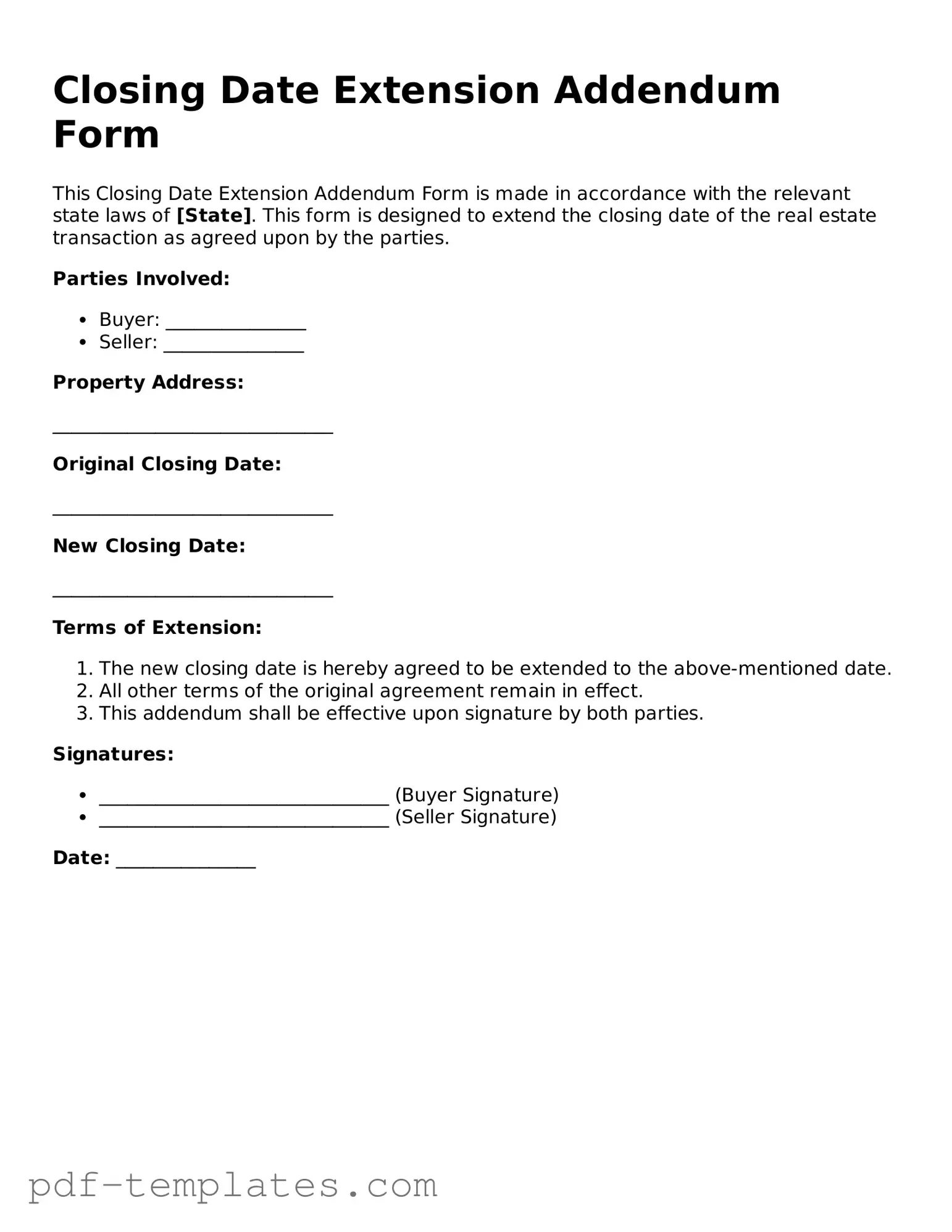The Closing Date Extension Addendum Form serves as a crucial document in real estate transactions, particularly when unforeseen circumstances arise that necessitate a change in the originally agreed-upon closing date. This form provides a structured way for buyers and sellers to mutually agree to extend the closing timeline, ensuring that all parties remain aligned and informed throughout the process. By detailing the new closing date, the reasons for the extension, and any additional terms that may apply, this addendum helps to mitigate potential conflicts and misunderstandings. It is important to note that both parties must sign the form for it to be valid, reinforcing the collaborative nature of real estate agreements. Furthermore, the use of this addendum can help maintain the integrity of the transaction, allowing for adequate time to address any outstanding issues, such as financing or inspections. Overall, the Closing Date Extension Addendum Form is a vital tool that facilitates smoother real estate transactions by promoting clear communication and mutual consent among involved parties.
